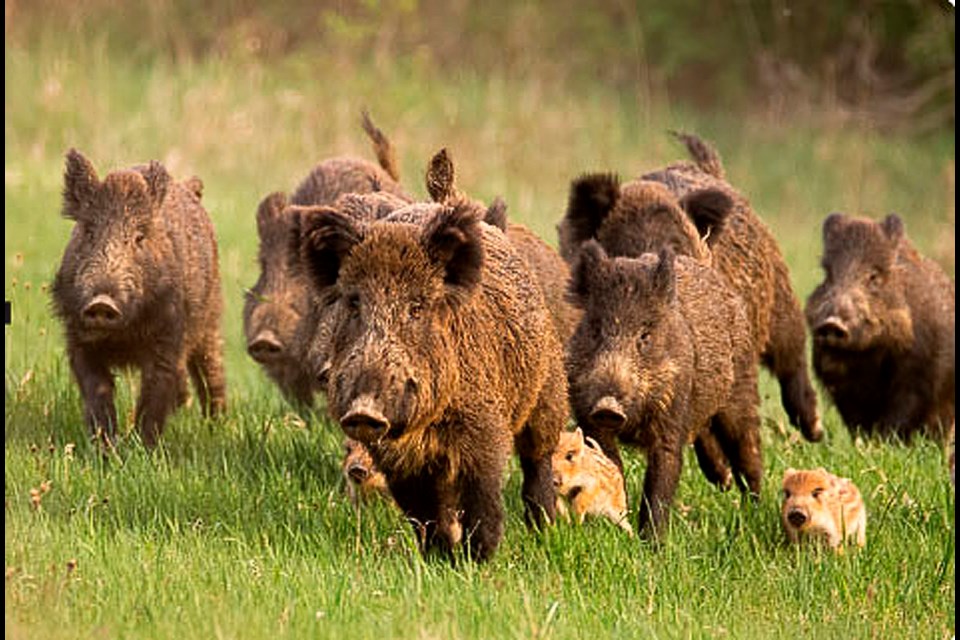You may have seen the news reports lately about how wild pigs are becoming a serious threat to the environment. Wild pigs (any pigs not being contained or fenced) includes feral domestic breeds, pot-bellied pigs, wild Eurasian boar, and hybrids of these. Wild boar farming was tried in the 1980’s as a way for farmers to diversify their income. At that time, it was thought that any who escaped would not survive our winters. Unfortunately, that was a wrong assumption, and through escapes and intentional releases these wild pigs survived, proliferated and inter-bred with escaped domestic pigs. The result is a serious problem with an invasive species. These animals pose a risk to the environment, crops and hay lands, domestic swine production and sometimes human health.
They have been described as an “ecological train wreck” for several reasons. They are omnivorous and will eat anything. This includes ground nesting bird eggs, small marsh animals, acorns, forages and grain crops, as well as stored feeds. Their rooting behavior removes grubs and insects that are food for other wildlife, and destroys planted crops, pastures and green spaces. Their wallowing behavior sullies waterways.
Their home ranges have been expanding. They can travel several hundred kilometers in search of food, shelter and breeding opportunities. There have been sightings in most of southern Manitoba including around Riding Mountain National Park, along the Assiniboine River, and in the Steinbach and Whiteshell areas. There is now an established population in the Spruce Woods area.
They reproduce at an alarming, exponential rate. A female pig can become sexually mature at 1 year of age and subsequently can have 2 litters per year of 5-6 piglets. Breeding can occur year-round. This means that early and aggressive intervention is essential to controlling the population.
They can be the vector for dozens of diseases. If exposed, wild pigs will contract and spread foreign diseases such as African Swine Fever, Classical Swine Fever, and Foot and Mouth Disease, putting at risk Manitoba’s domestic swine herd. They can also harbor diseases of public health concern such as leptospirosis, trichinellosis, brucellosis and tuberculosis.
They are an invasive species and have no natural predators. Wild pigs congregate in groups called sounders, consisting of breeding and adolescent females and their offspring. Boars often travel from group to group in search of females. There are no natural predators that will confront a sounder of females who will aggressively defend their young with large tusks can inflict severe wounds on any animal or person that threatens them.
The Manitoba Invasive Swine Eradication Project was announced in January 2022. It is a first step to developing methodology that will work in Manitoba for surveillance, to identify where wild pigs are in Manitoba. Control and removal is needed to stop the increase in population and to remove as many pigs as possible from the landscape by trapping the entire sounder. Unfortunately, experience in the US has shown that hunting actually disperses the pigs and makes it harder to find and remove them.
The departments of Agriculture and Natural Resources have partnered with the Manitoba Pork Council and will be seeking to engage many other organizations provincially, regionally and nationally that have a stake in this issue. Within Manitoba, the Squeal on Pigs awareness campaign will soon be launched to encourage the public to report sightings or signs of wild pigs, so watch for details in the coming weeks.
Wayne Lees Coordinator: Invasive Swine Eradication Project




